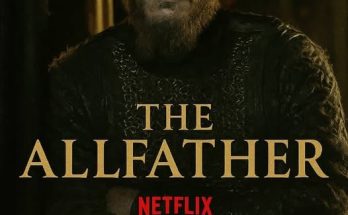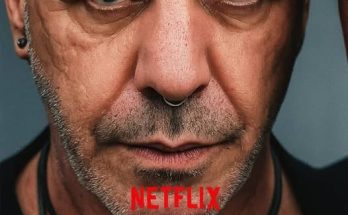Kattegat, the legendary home of the Vikings, has once again come alive, this time on Netflix in a gripping new movie that seeks to honor and extend the legacy of the Ragnarssons. For years, the story of Ragnar Lothbrok and his sons has fascinated audiences around the world, weaving a tale of exploration, conquest, family bonds, and betrayals that has etched itself into the collective imagination of fans of Viking lore. With Netflix stepping into the saga with Kattegat, audiences are promised not just a continuation of a myth but a reimagining of the Viking world that shaped history and storytelling alike. The film sets out to capture the raw energy of Norse culture while blending the sweeping dramatics of family destiny with the chaos of war and survival in a brutal age, and in doing so, ensures that the Ragnarssons’ legacy remains immortal in modern entertainment.
At the heart of the Netflix production is a narrative that reflects both history and myth. The Ragnarssons, sons of the legendary Ragnar Lothbrok, have long stood as larger-than-life figures in Viking storytelling. From Ivar the Boneless, feared and ruthless, to Bjorn Ironside, noble and adventurous, each of Ragnar’s sons carved his own legend in the sagas, and the new film seeks to bring these personalities to the screen with authenticity and grandeur. Kattegat itself, the symbolic home of their dynasty, becomes more than just a location; it is the heart of the Viking world, a place of power, politics, and dreams that ripple outward into every conquest and every tragedy. Netflix has positioned Kattegat not simply as another historical drama, but as an epic continuation that respects the past while charting a bold new path for Viking storytelling.
The visual design of the film demonstrates Netflix’s commitment to immersing viewers in the Viking era. Sweeping shots of icy fjords, rugged coastlines, and intricately designed longships recreate the geography and material culture of the Norse people with breathtaking detail. Kattegat, as depicted on screen, is both a thriving settlement and a crucible of ambition where rulers rise and fall in rapid succession. Every hall, every forge, every shipyard pulses with life, reminding audiences that this was not only a place of kings and warriors but also of families, farmers, craftsmen, and dreamers. This world-building ensures that the story feels both mythic and grounded, striking a balance between the epic scale of legend and the intimate struggles of human lives.
What distinguishes Kattegat from many of its predecessors is its focus on legacy. Ragnar Lothbrok’s presence looms large throughout the narrative, not merely as a memory but as a force that shapes the choices of his sons and the society they inherited. Each character grapples with the burden of his name, the expectations of glory, and the temptations of power. Ivar, Bjorn, Hvitserk, and Ubbe embody different facets of their father’s legend, and the film portrays them with complexity, showing both their triumphs and their flaws. By delving into their personal journeys, the movie avoids glorifying violence alone and instead emphasizes themes of loyalty, betrayal, ambition, and the search for meaning in a turbulent world. It becomes a story not just of Vikings, but of what it means to carry the weight of a legacy in times of change.
Another striking element is how Netflix intertwines history with spectacle. The battles are staged with visceral intensity, blending realistic combat with the cinematic grandeur audiences crave. Shields clash, axes swing, and longships burn in sequences that remind viewers of the brutality of Viking warfare while keeping them captivated by the artistry of the filmmaking. Yet alongside the violence, the film does not shy away from quieter moments: the intimate discussions around a fire, the inner conflicts of rulers torn between duty and desire, and the symbolic rituals that connected the Norse people to their gods and ancestors. This duality between spectacle and reflection allows Kattegat to transcend being just another action epic, evolving instead into a character-driven saga that resonates with modern audiences.
The cultural dimension of the story is also brought to life with care. The Viking belief system, their rituals, and their worldview are woven into the narrative without becoming mere exotic decoration. The gods are ever-present, not as physical characters but as forces influencing the characters’ decisions, fears, and ambitions. Omens, visions, and sacrifices punctuate the story, grounding it in the spiritual context that shaped the Viking psyche. At the same time, the film reflects the Vikings’ interactions with other cultures, capturing their roles not only as raiders but also as traders, explorers, and settlers. This layered portrayal gives depth to a civilization often stereotyped as purely warlike and highlights their adaptability and far-reaching influence.
Netflix’s investment in the film is evident not only in its visuals and narrative but also in its casting. The actors embody the larger-than-life figures of the Ragnarssons with intensity and nuance. Performances breathe life into characters that could easily have become archetypes, ensuring that audiences feel the humanity behind the legend. The strength of Bjorn, the cunning of Ivar, the loyalty of Ubbe, and the torment of Hvitserk are portrayed with depth, creating a dynamic interplay of personalities that drives the story forward. By focusing on this interplay, the film ensures that the Ragnarssons’ legacy is understood not only in terms of conquests and battles but also through the emotional bonds and rivalries that defined their family.
A significant achievement of Kattegat lies in how it bridges old fans of Viking tales and new audiences unfamiliar with the sagas. For those who have followed the saga of Ragnar through previous adaptations, the film offers continuity and closure, revisiting familiar themes while expanding the narrative landscape. For newcomers, it serves as an entry point into a world of adventure, drama, and cultural richness, accessible without prior knowledge yet enriched by the weight of legend. This balance is no small feat, and it highlights Netflix’s skill in crafting stories that can operate on multiple levels of engagement.
In terms of impact, Kattegat is poised to cement itself as one of Netflix’s standout epics. The platform has previously delivered grand-scale historical dramas, but this film combines the gritty authenticity of historical storytelling with the mythic allure of Viking legend in a way that feels uniquely powerful. It is not only entertainment but also a cultural phenomenon that continues humanity’s fascination with the Viking Age. The Ragnarssons’ saga, reframed for a new generation, carries forward the age-old themes of family, ambition, survival, and the quest for immortality in memory and story. Through this, the movie contributes to the ongoing dialogue between history and myth, between the past and the present.
The enduring allure of the Ragnarssons lies in their embodiment of universal human struggles set against an extraordinary backdrop. They remind us that even in an age of conquest and exploration, the deepest battles are often fought within the human heart. Netflix’s Kattegat captures this truth with cinematic boldness, ensuring that the Viking world remains alive in the imaginations of millions. The film’s mix of scale, spectacle, and soul promises to make it more than just a movie—it becomes an experience, an invitation into a legendary world where destiny is forged by both blood and belief.
Ultimately, Kattegat is not simply about retelling Viking history but about exploring what it means to live under the shadow of greatness. It challenges audiences to reflect on legacy, ambition, and identity, themes as relevant today as they were in the Viking Age. By focusing on the Ragnarssons, Netflix reminds viewers that behind every legend are individuals grappling with the weight of expectation, the lure of power, and the inevitability of mortality. In doing so, the film ensures that the story of Kattegat is not merely remembered but relived with intensity, awe, and admiration. The Ragnarssons’ legacy lives on, not only in the annals of history but also in the hearts of all who witness their saga unfold on screen.



